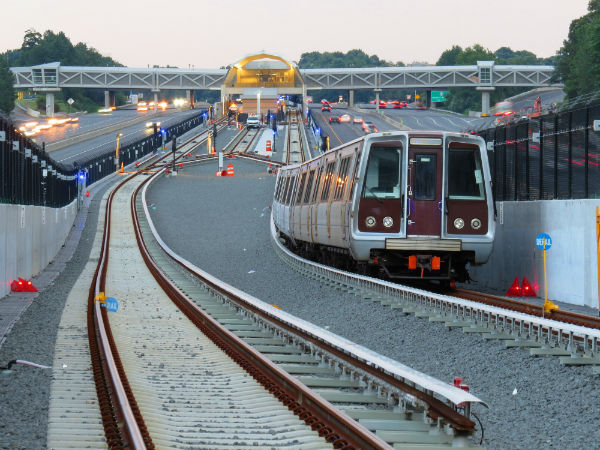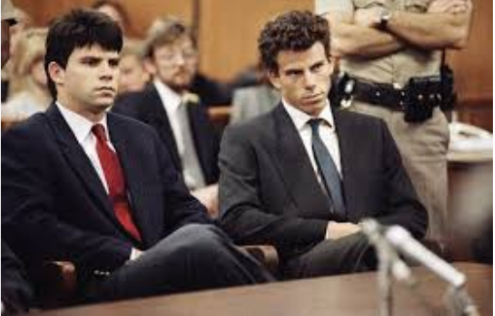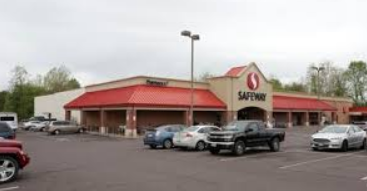Metro planners anticipate positive environmental, economic impacts
Imagine an underground parking lot, not just for cars but bikes too.
This is just one of the features of the newest Silver Line station in the Dulles-Corridor Metrorail Project, Wiehle-Reston.
Marcia McAllister, the communications manager for the project, has worked directly with the Metropolitan Washington Airports Authority on the project for the past eight years.
“The major difference for Wiehle Avenue Station is the parking garage, which includes a bike room,” McAllister said. “Because so many people in Reston like to bike, the bikes will be covered. We consider that to be a major plus.”
Not only does the parking garage include space for bikes, but its underground location provides for space to build structures on top, complete with a hotel.
“What’s envisioned there is on top of the parking garage there will be a smaller version of the [Reston] Town Center,” McAllister said. “You will see more intensive development around the Wiehle Avenue area.”
This vision aims to make the station a one-stop shop for residents.
“In theory, someone can ride their bike to the Metro station, take the train downtown to work and back, shop in one of the markets on the plaza when they return and ride their bike home,” Reston Association director of communications Kirsten Carr said. “Never once getting into their car.”
Along with these efforts to conserve and compact space, the entire project also focused on limited vehicular use, resulting in mediums to achieve these efforts.
“One of the driving forces behind the Reston concept is the independence from personal vehicles,” Carr said. “Being able to ride your bike to the Metro station and catch a train into D.C. just takes that independence once step further. Being able to jump on a train and head into D.C. without the hassle of driving, parking, and fighting traffic will make living in Reston even more convenient and family friendly than it already is.”
The project will aim to facilitate access to the station for the entire community, sans cars.
“We encourage people to walk to the Metro,” McAllister said. “It doesn’t look like it now, but Fairfax County is working very hard to build pedestrian walkways for access to the Metro.”
By providing locally oriented bus routes, the project will also mobilize the community.
“In Reston in particular, the RIBS bus system will be redirected to serve the transit towards neighborhoods,” McAllister said. “You will be able to take buses from neighborhoods directly to stations.”
With an emphasis on walking, biking, utilizing public transportation, and constructing compact buildings with plenty of natural light, the whole project is considered to be environmentally conscious.
“The opportunities to increase your carbon footprint are definitely increased with the environmentally friendly features of Reston Station,” Carr said.
These opportunities are expected to reduce environmental contaminants created by cars.
“We consider the whole project to be environmentally friendly because we are taking cars off the road and eliminating all of their pollutants,” McAllister said.
Along with a positive environmental impact project, an economic one is also expected.
With easier access, commuters and aspiring residents are expected to flow into Reston.
“There is definitely the potential for a positive economic impact, both from additional residents coming to the area, as well as now people traveling into Reston from parts outside to shop, eat and play,” Carr said.
This inflow of people is predicted to stimulate local businesses.
“This is going to give Reston a leg up,” McAllister said. “There will be a bigger labor pool. It is going to be easier for employers to find people to work.”
Large companies, such as Aston Martin and CollegeBoard, have already relocated to Reston in the past few years. More companies are predicted to hold office space in the area.
With more employment opportunities and easier access to the rest of the Washington, D.C area, the Metro system may provide a different way of life for some.
“It will also give people the option of switching from the car to a transit dependent lifestyle,” McAllister said. “Once you connect all corridors, you will have a very strong community that will appeal to people.”
The Metro may also allow for increased community interaction.
“Reston was built to encourage community engagement and neighbor relations by giving residents numerous opportunities to avoid going from their house to their solo car to their office and back home without every interacting with neighbors or other community members,” Carr said.
All of this planning has been years in the making, beginning from the foundation of Reston as a planned community.
“Reston is definitely a planner’s dream when it comes to public transportation,” Carr said. “The trails, pathways, bus systems and soon to be Metro give Reston residents every chance to live, work, play and get involved together.”
McAllister and Carr believe that the Silver Line completes the vision of Robert E. Simon, the founder of Reston.
“I think in some ways too for Reston the Silver Line coming is kind of the fulfillment of the concept that Robert Simon had for Reston,” McAllister said. “A place where you can live, work and, play all together, but that is still convenient to Downtown DC.”


















